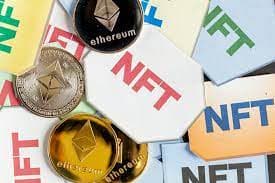
Cryptocurrencies and NFTs have become increasingly popular in recent years, but many people still struggle to understand the basics of these digital assets. In this article, we will provide an overview of what cryptocurrencies and NFTs are, how they work, and their potential applications.

Cryptocurrencies are digital assets designed to work as a medium of exchange, similar to traditional currencies like the US dollar or the Euro. However, unlike fiat currencies, cryptocurrencies are not backed by a government or a central authority. Instead, they rely on cryptography to secure transactions and control the creation of new units.
Bitcoin, which was launched in 2009, is the first and most well-known cryptocurrency. It operates on a decentralized peer-to-peer network and uses a blockchain, a public ledger that records all transactions. Bitcoin has a fixed supply of 21 million units, and its price is determined by supply and demand on exchanges.
Since the launch of Bitcoin, thousands of other cryptocurrencies have been created, each with its own unique features and use cases. Some cryptocurrencies, like Ethereum, have their own programming language and can be used to create decentralized applications (Dapps) and smart contracts.
NFTs, or non-fungible tokens, are digital assets that represent ownership of unique items or pieces of content, such as art, music, videos, and even tweets. Unlike cryptocurrencies, NFTs are not interchangeable or divisible. Each NFT is unique and has its own digital signature, which makes it easy to verify ownership and authenticity.
The rise of NFTs has been driven by the growing demand for digital art and collectibles. In 2021, an NFT artwork by Beeple sold for $69 million at a Christie's auction, making it one of the most expensive works of art ever sold.
NFTs are typically created on a blockchain, such as Ethereum, using smart contracts. The smart contract contains the rules for the NFT, such as how it can be transferred or sold, and ensures that the NFT cannot be duplicated or counterfeited.
Cryptocurrencies and NFTs have a wide range of potential applications, beyond just speculation and investment. Here are some examples:
- Cross-border payments: Cryptocurrencies can facilitate low-cost, fast, and secure cross-border payments without the need for intermediaries like banks or payment processors.
- Decentralized finance (DeFi): DeFi is an ecosystem of financial applications built on blockchain technology, such as lending, borrowing, and trading. It allows people to access financial services without the need for a traditional bank.
- Gaming: NFTs can be used to represent in-game assets, such as weapons, skins, and characters, which players can buy, sell, and trade.
- Art and collectibles: NFTs provide a way for artists and creators to monetize their digital art and collectibles, while also providing collectors with proof of ownership and authenticity.
Cryptocurrencies and NFTs are still in their early stages, and their potential applications are still being explored. While they are not without their challenges, such as volatility and scalability, they represent a significant innovation in the world of finance and digital ownership. As the technology evolves, it will be interesting to see how these digital assets are adopted and integrated into our daily lives.
